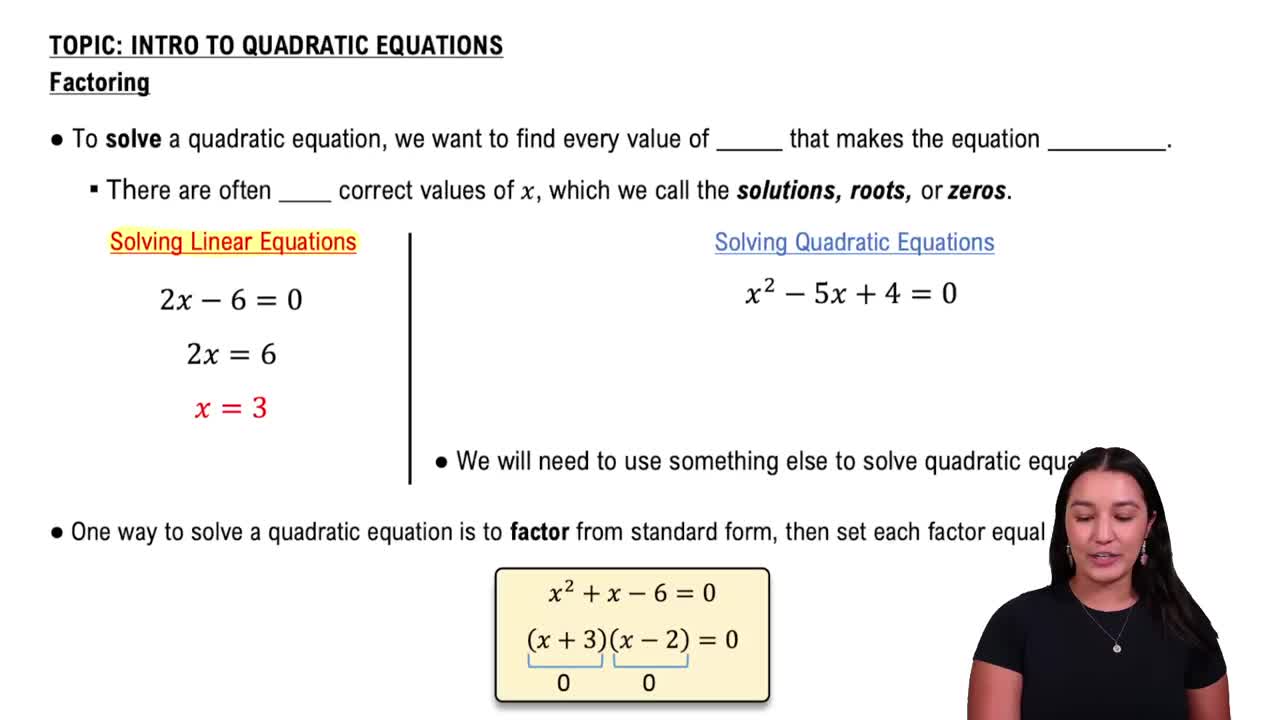Here are the essential concepts you must grasp in order to answer the question correctly.
Absolute Value Definition
The absolute value of a number is its distance from zero on the number line, regardless of direction. For any real number x, the absolute value is denoted as |x| and is defined as |x| = x if x ≥ 0, and |x| = -x if x < 0. This concept is crucial for understanding how to manipulate equations involving absolute values.
Recommended video:
Equivalence of Absolute Value Equations
The equation |u| = |v| implies two possible scenarios: u = v or u = -v. This means that the expressions inside the absolute value can either be equal or opposites of each other. Recognizing this equivalence is essential for solving equations that involve absolute values, as it allows for the formulation of two separate equations to solve.
Recommended video:
Categorizing Linear Equations
Solving Quadratic Equations
Quadratic equations are polynomial equations of the form ax^2 + bx + c = 0. To solve these equations, one can use methods such as factoring, completing the square, or applying the quadratic formula. Understanding how to solve quadratics is vital when dealing with absolute value equations that lead to quadratic forms, as seen in the given problem.
Recommended video:
Solving Quadratic Equations by Factoring
 Verified step by step guidance
Verified step by step guidance Verified video answer for a similar problem:
Verified video answer for a similar problem:



 6:12m
6:12m